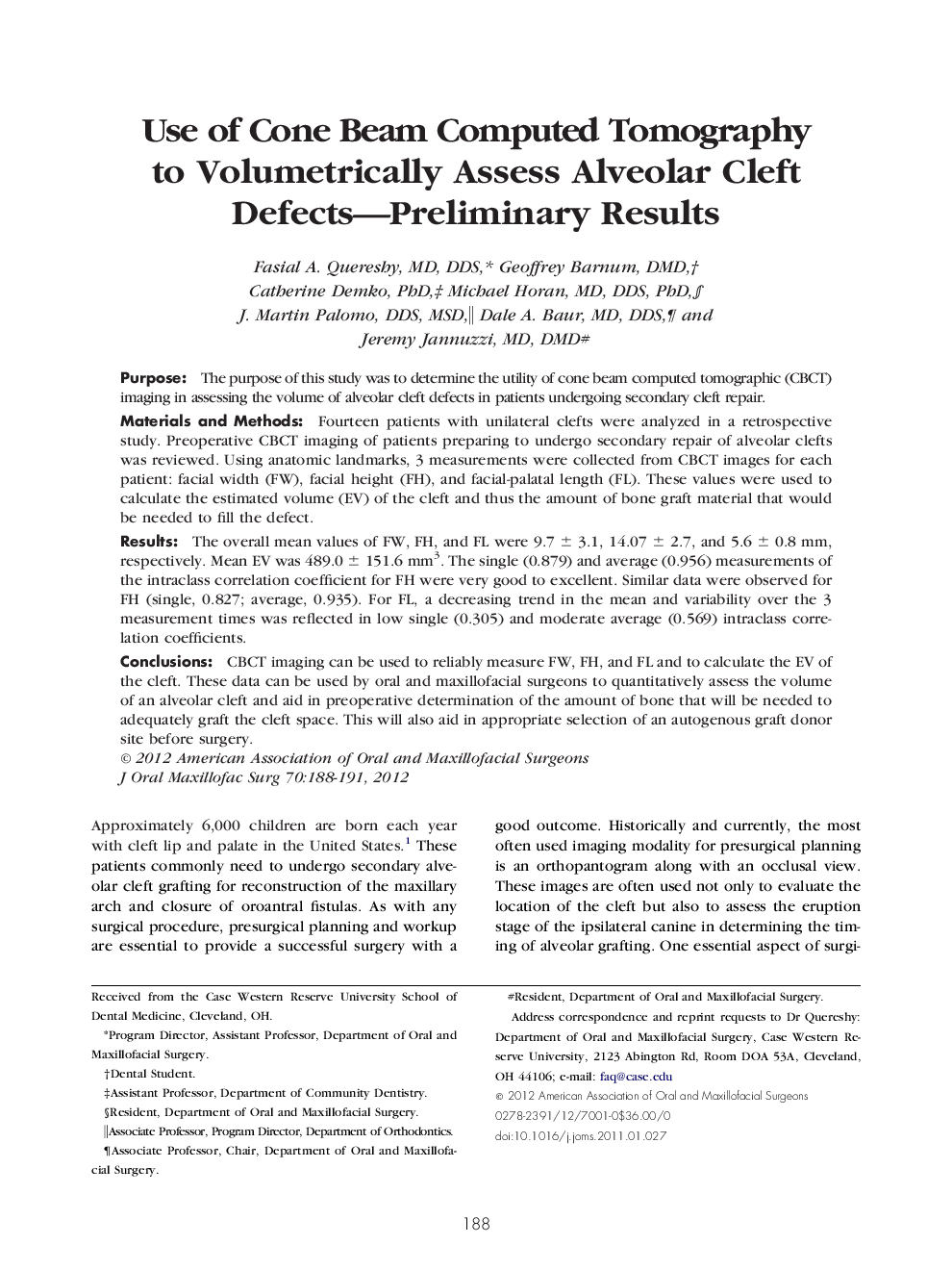| Article ID | Journal | Published Year | Pages | File Type |
|---|---|---|---|---|
| 3156745 | Journal of Oral and Maxillofacial Surgery | 2012 | 4 Pages |
PurposeThe purpose of this study was to determine the utility of cone beam computed tomographic (CBCT) imaging in assessing the volume of alveolar cleft defects in patients undergoing secondary cleft repair.Materials and MethodsFourteen patients with unilateral clefts were analyzed in a retrospective study. Preoperative CBCT imaging of patients preparing to undergo secondary repair of alveolar clefts was reviewed. Using anatomic landmarks, 3 measurements were collected from CBCT images for each patient: facial width (FW), facial height (FH), and facial-palatal length (FL). These values were used to calculate the estimated volume (EV) of the cleft and thus the amount of bone graft material that would be needed to fill the defect.ResultsThe overall mean values of FW, FH, and FL were 9.7 ± 3.1, 14.07 ± 2.7, and 5.6 ± 0.8 mm, respectively. Mean EV was 489.0 ± 151.6 mm3. The single (0.879) and average (0.956) measurements of the intraclass correlation coefficient for FH were very good to excellent. Similar data were observed for FH (single, 0.827; average, 0.935). For FL, a decreasing trend in the mean and variability over the 3 measurement times was reflected in low single (0.305) and moderate average (0.569) intraclass correlation coefficients.ConclusionsCBCT imaging can be used to reliably measure FW, FH, and FL and to calculate the EV of the cleft. These data can be used by oral and maxillofacial surgeons to quantitatively assess the volume of an alveolar cleft and aid in preoperative determination of the amount of bone that will be needed to adequately graft the cleft space. This will also aid in appropriate selection of an autogenous graft donor site before surgery.
